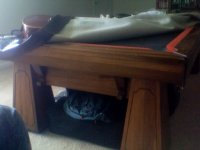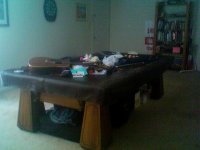I've seen many many tables go from perfectly level and months later they roll off??? What's the cause of this? To me a table should get more and more level over time not more and more unlevel. And I'm talking about Gold Crown type tables, not cheap light tables that shift.
G.G.
G.G.
Last edited:

